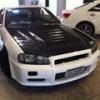Boost Controllers.
Announcements
-
Similar Content
-
Latest Posts
-
Hi all, got myself a 400R end of last year. Few tasteful mods done so far. Love the thing. Has anyone got any suggestions for sourcing bodykit parts for them over here???
-
Unplug the thermofans and let it idle... Watch the temp gauge as it all goes up... Record the values. And done.
-
Put in excel, graph it, fit a trend line, display formula. I totally am not reinstalling MATLAB. Hopefully you have it installed if you want to use it 😛 But if HPTuners can only fit a linear equation, no need for any of the above with some simple mafs...
-
If you ask just me you'll get 3 different answers.
-
Do not ever trust ChatGPT with anything math related. They can't do math. They have no idea what it is. With enough data we can fit a decent equation in Excel, or if the available fits in Excel aren't good enough, a Matlab clone.
-







Recommended Posts
Create an account or sign in to comment
You need to be a member in order to leave a comment
Create an account
Sign up for a new account in our community. It's easy!
Register a new accountSign in
Already have an account? Sign in here.
Sign In Now